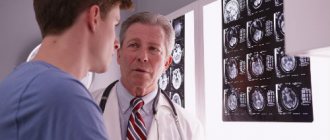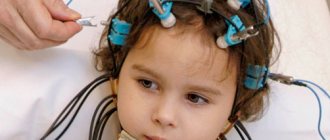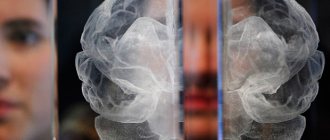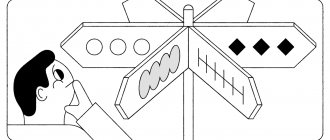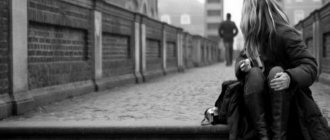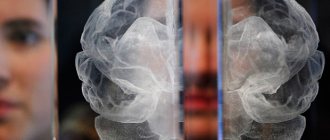Sudden dizziness, loss of balance - probably every adult has experienced these sensations. In most cases, no one attaches importance to these phenomena, although they may signal the onset of the development of a neurological or other disease. If you experience systematic dizziness and loss of balance, you should consult a neurologist to clarify the situation.
In Moscow, patients with dizziness are examined at the Yusupov Hospital. The clinic is a modern medical center, where the following areas are represented: neurology, rehabilitation, oncology, a scientific and practical center, a surgical department, and an addiction treatment clinic. The Yusupov Hospital provides examination, treatment and rehabilitation of various neurological pathologies, including dizziness and loss of balance. Highly qualified neurologists who have extensive experience in the treatment and diagnosis of diseases of any complexity work with the patient.
Loss of balance
Balance imbalance is a short-term or permanent inability to control the position of the body in space. Loss of balance is characterized by an unsteady gait, swaying, lack of coordination, and unexpected falls. A sharp loss of balance is most often associated with the development of some disease (neurological, cardiological and others), and is also observed in older people. In old age, loss of balance when walking, the causes of which are not related to the course of the disease, can be explained by the general aging of the body.
Impaired balance quite often coincides with dizziness, nausea, vomiting, and general weakness. In most cases, these disorders occur due to changes in the vestibular apparatus, traumatic or other brain damage, intoxication, and diseases of the inner ear.
Diagnosis of gait disorders at the ENT-PRACTIKA clinic
At the initial consultation, the doctor listens to the patient’s complaints, takes a medical history, measures blood pressure and conducts a neurological examination. To establish a final diagnosis, the specialist refers the patient for additional examinations:
- CT scan of the skull or MRI of the brain;
- Ultrasound;
- ENMG;
- encephalography.
Laboratory tests (PCR, RIF, ELISA, antibody tests, blood biochemistry) are an auxiliary method. They are prescribed for suspected infection, autoimmune process, or intoxication.
In any case, the scope of the examination is determined by the doctor, based on the expected diagnosis.
Causes
There are the following main diseases affecting the central nervous system, which are accompanied by loss of balance:
- Parkinson's disease. With the development of parkinsonism, characteristic changes in a person’s gait and posture occur. Patients have a curved posture: the spine bends forward in the thoracic region, the head tilts down, the elbows and knees are slightly bent. It is difficult for the patient to start and finish movements. He slowly begins to walk, his feet barely leave the surface, his steps are very small (“shuffling” gait). Once you gain speed while walking, it is quite difficult to stop. An imbalance occurs and a person may fall. It is difficult for the patient to accelerate or quickly change the direction of the body - this also leads to imbalance;
- cerebellar damage. Balance imbalance occurs when the cerebellum and its connections are damaged. Patients are characterized by a posture with legs widely spaced, which is caused by difficulties when walking along a narrow line. An attempt to put the legs together is accompanied by swaying, large movements of the body back and forth. As a result, most often, a fall occurs. The patient walks very carefully, swaying in different directions, uses various objects (furniture, walls, etc.) for support;
- cerebral paralysis. The pathology causes many different movement disorders, which are accompanied by gait disturbances and loss of balance. Patients often experience rapid or moderate serpentine movements of the arms and legs, changes in posture with sudden strong flexion and extension of the limbs and torso. When walking, involuntary movements of the limbs, rotational movements of the neck and grimaces on the face occur. Patients with cerebral palsy are characterized by asymmetrical positions of the limbs when turning the torso. If you change posture carelessly and quickly, a person may lose balance and fall.
Balance and coordination problems
Impaired coordination of movement is called “ataxia” by the medical term. This condition is a sign of a process that was triggered by problems in the functioning and distribution of nerve impulses sent from the brain.
To carry out effective treatment, it is necessary to conduct a comprehensive diagnosis and eliminate the factors that initially influenced the process of human brain activity. Self-medication in such a situation is impossible and unacceptable. This is because serious consequences such as disability or death are possible.
The musculoskeletal system is subject to control by the nervous system. Neurons located in the spinal cord and brain are interconnected. Thanks to their coordinated work, a signal is transmitted to the main human organ. From there comes a response impulse that provokes action.
When neurons from different areas work correctly, the signal is clear and lightning fast. If there are problems in any part, the impulse is supplied slowly or is absent altogether. The disturbance is called loss of motor coordination.
Most often, the disease occurs in older people who have crossed the 60-year threshold, regardless of whether they are men or women. The reason for the occurrence, first of all, is the aging of the body and the inability to clearly and fully carry out assigned tasks. The disease can develop not only in adults, but also in children.
Species and types
There are static and dynamic violations. In the first case, problems with coordination arise only when the person is vertical, when the patient is standing. In the second situation, incoordination appears with any movement.
The following types of ataxia are diagnosed:
- Posterior columnar (sensitive) - develops with damage to the spinal and peripheral nerves, as well as the thalamus and posterior columns of the spinal cord. Movement is difficult; when walking, the patient does not feel a hard surface underneath him or his own actions. The cause is changes in the sensitivity of the muscular-articular system.
- Cerebellar - manifests itself due to damage to the cerebellar system. It is divided into 2 types: dynamic or static-locomotor. In the first type, the functioning of the cerebellar hemispheres is disrupted. The person makes frequent chaotic movements, there is uncoordination, trembling of the arms and legs, and a speech disorder is detected. The second type is characterized by damage to the cerebellar vermis. The patient has an unsteady gait, he staggers and spreads his legs when walking. In severe cases, the support of the head is disrupted and keeping it in one position becomes impossible.
- Vestibular – disorders occur in the vestibular apparatus. The head is constantly dizzy, the condition is accompanied by nausea and vomiting. When changing position or sudden movement, the symptoms worsen.
- Cortical - the problem occurs in the cortex in the frontal lobe in the anterior regions. Impulses from this part are directed to the cerebellum. There is a change in gait, unsteadiness and uncertainty when walking. The human body deviates in different directions, the feet are aligned in one straight line, and legs become entangled.
To correctly diagnose the type of disease, the factors of its occurrence are first identified. Based on these data, the patient is prescribed therapy. To eliminate the problem, you need to know exactly the causes of poor coordination when walking.
Causes of the disease
The movement problem is dangerous and serious for a patient with disabilities. Being in this state, a person is unable to coordinate his own actions.
The development of the disease is influenced by many factors. The following reasons are identified:
- Traumatic brain injury
- Brain neoplasms
- Parkinson's disease
- Encephalopathy
- Dorsopathies
- Stroke
- Cerebral palsy
- Intoxication due to improper use of medications
- Gas poisoning
- Autoimmune diseases
- Sclerotic changes in old age
- Infectious diseases: meningitis, encephalitis
- Taking drugs
- Catalepsy is muscle relaxation due to a surge of emotions.
It is not difficult to identify the disease; the symptoms are visible to the naked eye. But to know exactly what they are, you need to familiarize yourself with the clinical picture.
Symptoms of manifestation
People with a developing disease move poorly, are unsure, lack balance, appear distracted, and have impaired articulation. When trying to draw a figure, for example, a circle, in the air, the patient ends up with a zigzag or broken line.
One method of testing coordination is a test where the patient is asked to touch his nose. If the disease develops, a person cannot perform the assigned task normally. The patient gets it either in the mouth or in the eye. Negative changes are also visible in the handwriting: the letters are written unevenly, creep on top of each other, and jump along the line. These signs indicate neurological problems.
When coordination is impaired, the following symptoms appear:
- The pupil perceives the present as an illusion, objects are constantly in motion or rotation;
- The gait changes, there are frequent falls;
- High blood pressure is recorded, hypertension is detected;
- The patient becomes lethargic, drowsiness appears or sleep is disturbed;
- There is a malfunction in the functioning of the hearing organs: sometimes noises are heard, sometimes sudden silence;
- There is tremor of the limbs;
- There is a loss of clarity and coherence of movements;
- There are headaches for no apparent reason and severe dizziness;
- Irregular breathing, shortness of breath, increased sweating;
- Psychoneurological disorders occur - delusions, hallucinations.
Regardless of what symptom is present, you should immediately consult a doctor. The doctor assesses the patient’s condition and accurately establishes a diagnosis, on the basis of which a therapeutic intervention is prescribed. Early detection of disturbances in motor coordination leads to a reduction in symptoms and short-term therapy.
Treatment of ataxia
To accurately identify the disease that the patient suffers from, the doctor records complaints, conducts an external examination and tests. To make an accurate diagnosis, it is necessary to undergo a certain examination:
- Biochemical blood test in expanded form;
- Magnetic resonance and computed tomography;
- General urine and blood tests;
- Ultrasound examination of internal organs.
Depending on the patient’s complaints, the diagnosis is adjusted, and the range of necessary tests is expanded. Based on the results obtained, the doctor tells you how and why you need treatment.
To treat impaired motor coordination, an integrated approach is used, which includes drug therapy, as well as, if contraindications are excluded, rehabilitation. The following medications are used for therapy:
- Nootropics and angioprotectors;
- Vitamins B, A, C, B12;
- Antibiotics to treat existing infection in the brain or middle ear;
- Medicines that activate cellular metabolism.
All medications are prescribed by the doctor for the patient on an individual basis.
A number of exercises have been developed to restore balance, as well as to prevent their occurrence:
- When traveling on public transport, it is better not to sit down, but to remain standing. The legs are spread shoulder-width apart, you need to refrain from supporting. Try to coordinate your movements while balancing on weight;
- Place your feet together, spread your arms in different directions, close your eyes. You need to hold this position for 20 seconds. Then lower your hands and repeat the procedure again;
- It is required to take long walks every day, taking walks. You need to walk along a narrow curb without the help of others. This exercise can be done at home. To do this, you need to draw a line or lay out a board and try to walk smoothly along the marked surface;
- Exercise with stairs. You have to climb up and down the rungs several times throughout the day.
- Both feet are placed on the same line, so that the toe rests on the heel of the other. Hands spread in different directions. You need to stand like this for 15-20 seconds, then change position.
Thanks to daily exercises, all systems are gradually brought back to normal. Drug therapy additionally affects internal organs and normalizes blood circulation. This allows you to quickly treat the acquired disease.
Thus, impaired coordination of movement is a pathological process that occurs due to malfunctions of the nervous system. The symptoms of the disease are obvious, so you should not delay treatment. Correctly and daily exercises, as well as taking recommended medications, can quickly restore the patient’s condition.
Losing your balance in the dark
There may be cases of loss of balance in the dark. The disorder may occur due to chronic vestibular dysfunction. Increased symptoms in the dark are due to the fact that in such a situation vision cannot compensate for the defect. As a result, simply going to fetch water at night will cause significant difficulty and often end in a fall. Loss of balance in the dark is caused by drug intoxication, damage to the cerebellum, and disorders in the cervical spine. If the cerebellum is damaged, visual control is not important and the person will constantly experience a feeling of loss of balance.
How to improve unsteady gait
Walking 30 minutes a day and maintaining a physically active lifestyle are the most important recommendations for maintaining mobility. But walking alone is not enough.
If your gait has changed due to problems with your lower extremities, exercises to strengthen your muscles and improve your balance will help. They are prescribed by neurologists, orthopedists or physiotherapists. Here are examples of popular exercises.
Balancing on one leg
Hold onto a chair and keep your weight on one leg only. Slowly release the chair. Try balancing for 30 seconds and then increase the time to a minute.
Leg raises
While leaning on a chair, slowly lift one leg in front of you at least 20cm off the ground. At the same time, hold it straight for 5-10 seconds. Repeat several times, then perform lifts with the other leg.
Heel raise
Stand with your feet shoulder-width apart. Slowly rise up onto your toes, then lower back down. Repeat ten or more times.
Unsystematic sudden dizziness
About 30% of complaints about dizziness and loss of balance are called false, that is, non-systemic. The sensations are not associated with the development of the disease and can occur in the following situations:
- a sharp change in body position when standing up after prolonged sitting or lying, a sharp turn of the head. The feeling of loss of balance lasts seconds and is associated with the redistribution of blood in the vessels;
- the appearance of feelings of fear or anxiety. Dizziness is caused by a psychological factor;
- overwork, lack of sleep;
- lack of nutrients during an irrational diet;
- dizziness during pregnancy may be associated with the development of anemia, fatigue, changes in the body during pregnancy;
- intoxication with medicinal, alcoholic and narcotic substances causes a feeling of loss of balance and dizziness due to the toxic effect on the vestibular apparatus.
When should you sound the alarm?
Impaired coordination in some cases is a consequence of serious illnesses. It is recommended to consult a specialist if:
- stumbling has become more frequent, often occurring even out of the blue;
- falls due to weakness in the legs;
- impaired control of movements;
- unnatural gait;
- after a long walk there is a sudden stop, then there is a feeling that it is impossible to move your leg;
- feeling of “cotton” legs;
- difficulty walking on stairs;
- when moving, most of the weight increasingly moves to the heel area;
- when trying to get up, a person falls;
- difficulty raising a leg or starting to move after a long rest;
- the appearance of dizziness, pounding in the temples, darkening in the eyes.
Often a person begins to be afraid and panic.
It is absolutely impossible to ignore such symptoms, since they indicate the presence of diseases.
Where to go and which doctor
If you experience constant dizziness and a feeling of loss of balance, you should seek help from a neurologist. The doctor will determine the reasons for the development of this condition and prescribe the necessary treatment. If during the diagnostic process it turns out that the cause of dizziness and loss of balance is not a neurological disease, the doctor will refer the patient to the appropriate specialist (cardiologist, otolaryngologist, etc.) to eliminate the problem.
The Yusupov Hospital is equipped with the latest technology. The latest equipment from global manufacturers is used here. This allows you to diagnose any disease quickly and in the shortest possible time. Timely diagnosis greatly facilitates the treatment process and eliminates possible complications and unpleasant consequences.
The Yusupov Hospital is located near the center of Moscow and receives patients around the clock. You can make an appointment and get advice from specialists by phone.
Treatment
Conservative therapy
Treatment tactics are determined taking into account the underlying disease. In case of infectious-inflammatory genesis of ataxic gait, antibiotic therapy or antiviral therapy is indicated. For patients with vascular diseases, depending on the nature of the pathology, anticoagulants, antiplatelet agents, thrombolytics, angioprotectors, and vasodilators may be recommended. Patients with ataxia and unsteady gait due to intoxication require detoxification therapy.
Pathogenetic therapy for hereditary ataxia has not been developed. The same symptomatic measures are taken as for ataxias of other etiologies. Prescribe B vitamins, anticholinesterase drugs, ATP, piracetam, meldonium. Exercise therapy classes are conducted to improve the general condition and strength of muscles, and reduce the severity of incoordination. Patients are referred for massage.
Surgery
Surgical interventions are required for large processes and circulatory disorders. Taking into account the etiology of the ataxic gait, the following techniques are used:
- Neoplasms
: removal of tumors of the cerebellum, cortex, brain stem. - Abscesses
: drainage, removal along with the capsule. - Hematomas
: transcranial and endoscopic removal, stereotactic aspiration. - Occlusive hydrocephalus
: ventriculoatrial and ventriculoperitoneal shunting, external ventricular drainage.
Disease Prevention
It is not always necessary to carry out special drug treatment; sometimes it is enough to simply adjust your lifestyle. Prevention measures:
- watch your diet - food should be healthy, varied and balanced;
- try to give up bad habits;
- if your work involves a computer, take short breaks every hour to give your eyes a rest;
- walk outdoors more often;
- observe the rest and work schedule;
- after a hard day at work, take a cool shower to restore energy and relieve fatigue;
- Dedicate 10 to 15 minutes of free time every day to perform the exercise.
I note that not only antibiotics from the aminoglycoside group have a high ototoxic effect, but also cytostatics (Methotrexate) and anti-tuberculosis drugs. Aspirin is slightly less toxic to the organ of hearing and balance. Next to reduce possible harmful effects are loop diuretics (Lasix, ethacrynic acid), macrolides (Azithromycin, Clarithromycin) and fluoroquinolones (Ciprofloxacin), as well as painkillers (Indomethacin, Naproxen and Lidocaine). Taking the above medications may cause attacks of dizziness. If alarming symptoms appear, you should immediately consult a doctor.
Victoria Druzhikina
Neurologist, Therapist
The main specificity of the ataxic gait
When balance is impaired, patients try to increase the space of support, place their legs wide, stagger randomly and sway while moving. Synchrony between the upper and lower limbs disappears. The shaky state remains in a horizontal position and does not depend in any way on the person’s visual control. Features of this manifestation:
- A one-sided reaction in the cerebellum causes damage to one part of the body. There is a risk of falling on the affected side.
- When the cortical parts are involved, the clinical picture of the disease is similar to the symptoms of cerebellar ataxia. The unstable condition intensifies when turning, patients often “fall” on the affected side. Unsteadiness of gait depends on the severity of the development of pathology in the cerebral cortex.
- In individuals with abnormalities in the ventrolateral thalamus, similar symptoms appear on the opposite side of the body. Doctors note a tendency to fall on the healthy side or backward.
Where can I get an MRI and CT scan?
You can explore the city’s medical centers, compare prices for diagnostics and choose a clinic near your home. Our service contains all the institutions in the capital that perform MRI and CT scans when you need to study the brain. On the portal you can choose a clinic and learn about:
- rating;
- work schedule;
- qualifications of health workers;
- current price list;
- discount offers;
- technical parameters of the equipment.
In each block with a clinic where MRI of the whole body is performed, there are sections with licenses, photographs of establishments and reviews of visitors.
